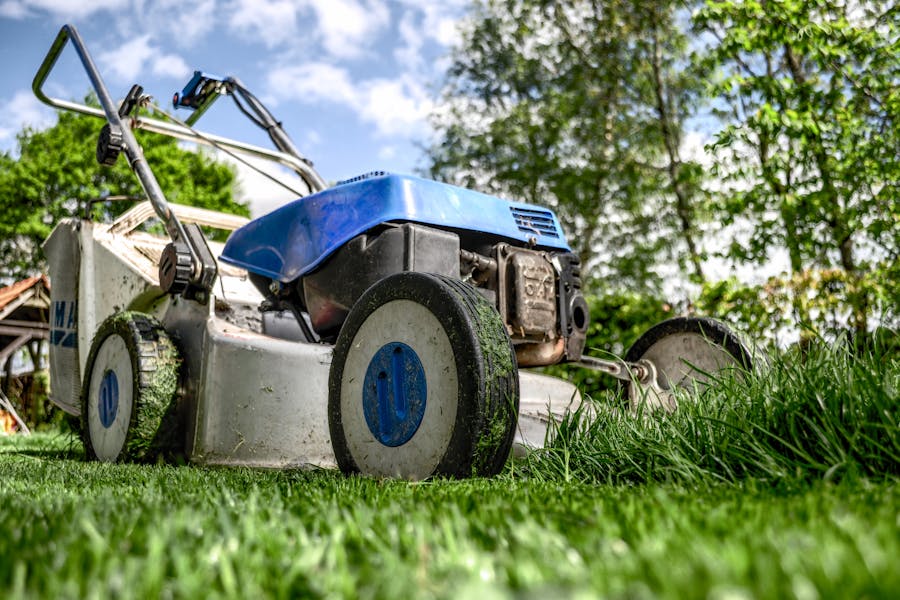Is your electric lawn mower delivering the results you expected? If the answer is “not really,” it’s not the machine’s fault. More often than not, it comes down to how it’s being used. Electric mowers can be quiet, efficient, and powerful, but only when you treat them right.
Whether you’ve just switched from gas or have been using electric for years, there’s a good chance you’re missing a few key habits that could make your mower last longer and your lawn look better.
Let’s get into what really matters.
Understand Your Lawn First
Before blaming your mower for a patchy or uneven cut, take a closer look at your lawn. Is it thick and overgrown? Wet? Uneven? These factors can completely change how effective your electric lawn mower will be on any given day.
A few things to assess:
- Grass height – Don’t let it grow too long between mows. Most electric mowers aren’t designed to cut through wild growth.
- Moisture – Cutting wet grass leads to clumping, motor strain, and blade build-up. Always wait for dry conditions.
- Type of grass – Some grass types are tougher and require more frequent blade sharpening.
Knowing your lawn helps you plan smarter and avoid pushing your mower to its limits.
Don’t Push It Like a Gas Mower
Electric mowers aren’t built to be shoved through thick, resistant turf like gas models. One of the most common mistakes is forcing the mower too fast, expecting it to perform the same way a gas-powered model would.
Here’s what to do instead:
- Move at a steady, moderate pace.
- Listen to the motor. If it sounds like it’s working too hard, slow down.
- If the mower stalls or chokes, back off and take a shallower pass.
Taking it easy helps the battery last longer and reduces stress on the motor.
Keep the Blades Sharp
Blunt blades don’t cut. They tear. That’s bad news for your lawn and worse news for your mower. Torn grass tips lead to browning and disease. And the motor works harder to do the same job.
Make it a habit to inspect the blades every few weeks. Sharpen them when needed. If you’re mowing weekly in peak season, you may need to sharpen monthly. It’s not overkill — it’s just maintenance.
Don’t forget to clean the blades too. Grass build-up underneath the deck can dull them faster and weigh down the mower.
For more ways to save money and keep your yard in shape, check out 5 Tips for Cutting Down on Lawn Care Cost as a Homeowner.
Battery Habits Make a Big Difference
The way you charge and store your mower’s battery affects how long it lasts and how well it performs.
Here’s how to get it right:
- Fully charge before each use – Partial charges reduce overall lifespan over time.
- Avoid complete drains – Try not to let the battery hit 0%. Recharge before it’s totally dead.
- Store in moderate temperatures – Too hot or too cold shortens battery life.
- Unplug after charging – Don’t leave it connected to the charger for days on end.
Treat the battery well and you’ll get more consistent mowing time, season after season.
Adjust Cutting Height Based on the Season
One height doesn’t work all year round. If you’re using the same blade setting from spring through fall, you’re probably stressing your grass and dulling your blades faster than necessary.
Here’s a general guideline:
- Early spring – Raise the deck slightly. This protects new growth.
- Late spring to early summer – Lower it a bit. A shorter cut helps control quick growth.
- Peak summer – Raise the height again. Taller grass holds moisture and withstands heat better.
- Fall – Go shorter for the final cuts. It helps reduce thatch before winter sets in.
Making small adjustments throughout the year leads to healthier turf and better mower performance.
Keep It Clean and Dry
Your mower doesn’t need to sparkle, but a little cleanliness goes a long way. After every mow, check underneath the deck. Clear out any caked-on clippings or mud. This build-up can clog the motor, dull the blades, and weigh the mower down.
Also, avoid leaving the mower outside in wet or humid weather. Electric components need to stay dry. Store it in a shed or garage, and if that’s not an option, at least use a waterproof cover.
Take Advantage of Quiet Operation
One underrated perk of electric mowers is how quiet they are. This gives you more flexibility in choosing when to mow. Early morning or late evening mowing won’t disturb neighbors, and cooler temperatures can make mowing easier on the battery and motor.
Use that flexibility to avoid midday mowing in high heat, which can strain your mower and dry out your lawn.
Watch for Warning Signs
Don’t ignore small issues. A slightly weaker battery, a new noise from the motor, or uneven cutting could be early signs of wear or damage. Dealing with problems early usually means cheaper fixes and less downtime.
Here are a few signs to look out for:
- Motor cutting out mid-mow
- Uneven or jagged grass after a pass
- Mower pulling to one side
- Burnt smell from the battery or motor
- Vibration that wasn’t there before
These shouldn’t be ignored. Stop and inspect. Clean the deck. Check the blades and battery. If it continues, get it looked at before it turns into a full breakdown.
Make Mowing More Efficient with These Small Tweaks
Sometimes, it’s the little changes that make a big difference. Here’s a quick list of small habits that can stretch each mow further:
- Mow when the grass is dry – Wet grass causes clumps and drain.
- Overlap your paths slightly – Prevents missed strips.
- Empty the bag before it’s full – Overfilled bags block airflow.
- Use a consistent pattern – Crisscrossing weekly helps promote upright growth.
You don’t need to overhaul your entire routine. Just make a few adjustments and let the mower do the work it was built for.
Cut Smarter, Not Harder
Electric lawn mowers can give you great results if you treat them with a little care. Pay attention to the basics — sharp blades, charged battery, dry grass — and your mower will run better and last longer.
Too many people assume these machines are maintenance-free, but that’s never the case. A bit of effort up front saves you from frustration down the road.
So next time you’re heading out to mow, don’t just plug it in and go. Think it through. Make a plan. Then let your mower do what it does best quietly, efficiently, and cleanly.





























